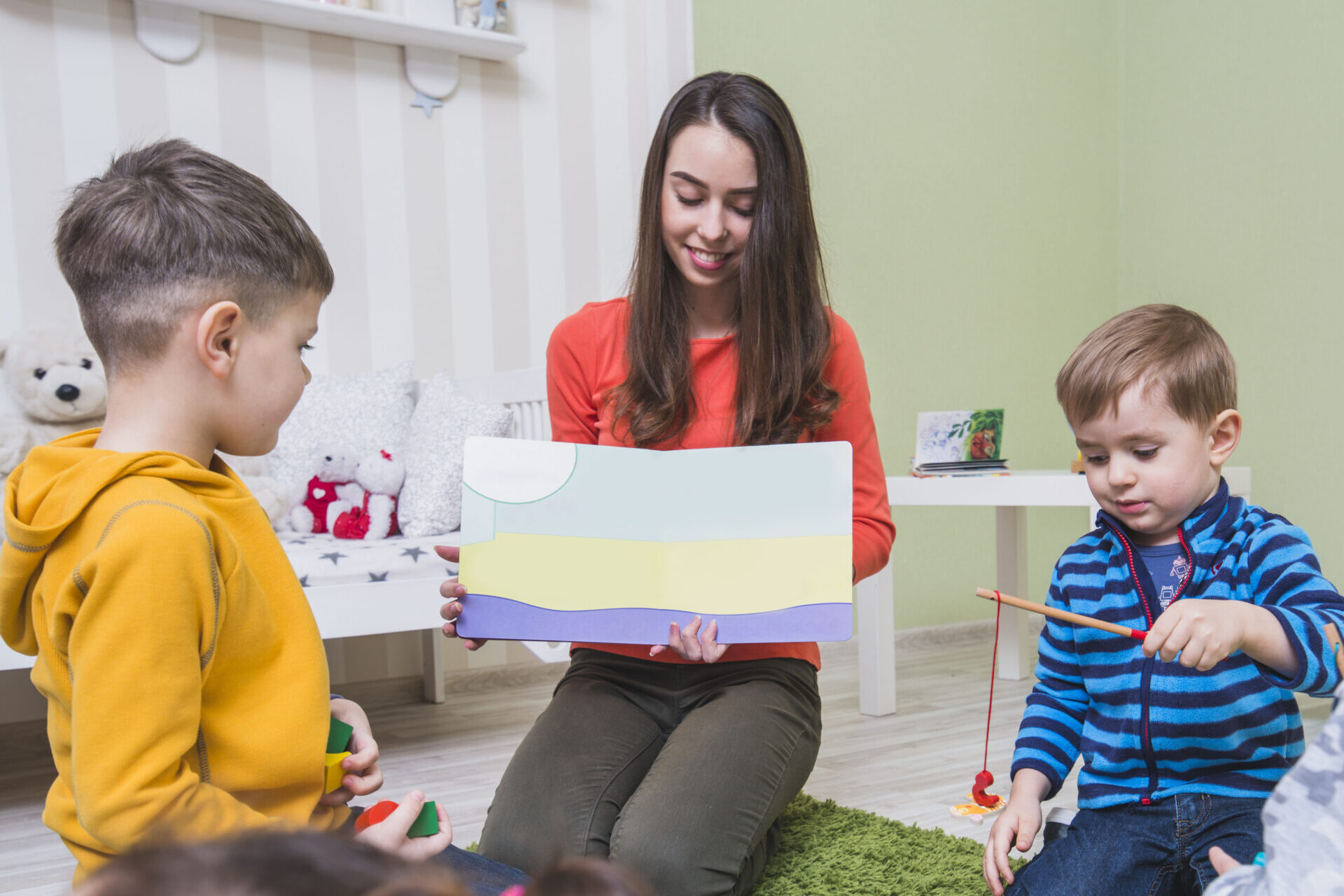Mindfulness is a crucial skill for young learners, enhancing focus, emotional resilience, and empathy. This guide explores how Australian teachers can introduce mindfulness in the classroom through storytelling, aligning with the Australian Curriculum and supporting teacher well-being.
Why Teach Mindfulness in the Classroom?
Mindfulness is about bringing awareness to the present moment, a skill that supports mental clarity and emotional balance. For young children, learning mindfulness can:
- Enhance focus and attention during lessons.
- Improve emotional regulation and reduce stress.
- Build empathy and social skills, enhancing a positive classroom culture.
Incorporating mindfulness into the classroom also benefits teachers by creating a calmer teaching environment, ultimately contributing to overall teacher well-being.
Storytelling: A Gateway to Mindfulness
First of all, storytelling is a mindfulness activity itself, as it naturally draws children into the present moment, capturing their attention and engaging their imagination. As children listen to stories, they practise being fully present, focusing on the narrative, the emotions of the characters, and the rhythm of the storyteller’s voice. This deep level of engagement helps them to temporarily set aside external distractions and cultivate a sense of calm and awareness.
Besides, books with mindfulness concepts further enrich this experience by seamlessly weaving lessons of calmness, patience, and kindness into engaging narratives. Through relatable characters and immersive storytelling, children can explore these ideas in a way that feels natural and enjoyable.
Suggested Books That Explore Mindfulness:
- Slow Down, World by Tai Snaith – A beautifully illustrated book that encourages young readers to appreciate the small, quiet moments in life. It reminds children to observe their surroundings and find joy in simple things.
- Alone Together by Suzanne Bloom – A gentle story highlighting patience, empathy, and the joys of being present. This book teaches the importance of understanding others’ feelings and enjoying shared quiet moments.
- Nice and Slow by Sarah Ayoub – A charming tale that teaches the value of slowing down and cherishing meaningful connections. It shows how mindfulness can help build stronger relationships by being present and thoughtful.
Furthermore, for teachers or storytellers, the act of narrating becomes a mindful practice as well, requiring attentiveness to the audience’s reactions, the pacing of the tale, and the emotions conveyed through tone and expression. Together, this shared experience enhances a mindful connection between storyteller and listener, creating a safe space for learning, reflection, and emotional growth.
Mindfulness Activities for Young Learners
1. Breathing Exercises Inspired by Stories
After reading Slow Down, World by Tai Snaith, lead the class through a “slow breathing” exercise to help them connect with the story’s theme of appreciating quiet, simple moments.
- Create the Scene: Ask students to close their eyes and imagine they’re in a serene park or garden, like the one in the book. Describe the sounds of birds chirping, the gentle rustling of leaves, and the warmth of sunlight on their skin.
- Slow Breathing: Guide them to take a deep breath in through their noses, imagining they’re inhaling the fresh scent of flowers or grass, and exhale slowly through their mouths as if they’re gently blowing on a dandelion. Repeat this 3–5 times.
- Reflect: After the exercise, invite students to share how they felt. Ask them if they noticed anything about their bodies or minds as they slowed down their breathing.
This activity reinforces mindfulness by grounding students in their senses, helping them practice being fully present.
2. Create a Mindfulness Jar
A mindfulness jar is a visual and interactive way to teach children how to regulate their emotions, inspired by stories where characters face challenges.
- Introduce the Concept: Tie this activity to a moment in a book like Alone Together where characters experience frustration or impatience. Explain how our emotions can feel “stirred up” like a storm inside us.
- Build the Jar: Fill a jar with water, glitter, and a drop of food coloring. Secure the lid tightly. Shake the jar and show how the glitter swirls chaotically, symbolizing our minds when we’re upset.
- Watch and Breathe: Have the children sit quietly, holding their jars. Guide them to take deep breaths as they watch the glitter settle. Encourage them to imagine their thoughts and emotions also calming down.
- Reflect: Discuss how pausing and breathing helped the characters in the story overcome their challenges, and how it can help them too.
This activity not only ties into storytelling but also equips students with a tangible tool to manage their emotions.
3. Cosmic Kids Yoga – Yoga Through Storytelling
After reading The Gruffalo by Julia Donaldson, guide students through mindful movement activities inspired by the characters and scenes in the book.
- Fox’s Crawl: Have students crawl quietly, like the fox sneaking through the forest. Encourage them to move slowly and notice how their hands and knees feel against the ground.
- Gruffalo’s Stomp: Let children stomp gently in place, focusing on the sensation of their feet connecting with the floor.
- Owl’s Wings: Encourage them to stretch their arms wide like the owl and take deep, slow breaths, imagining they are flying calmly through the treetops.
- Mouse’s Pause: Ask students to sit still, like the clever mouse, and take three deep breaths, noticing the sounds around them in silence.
This movement-based mindfulness activity encourages focus, balance, and connection to the story, helping children explore the tale in an engaging and calming way.
4. Calm Corner
Inspired by Alone Together book, calm corner is a cosy, softly lit space with cushions, rugs, and soothing colours, designed for mindfulness and quiet reflection. It features teddies, dolls, and mindfulness-focused books to provide comfort and encourage children to slow down, read, or rest. Sensory items like stress balls or glitter jars add calming tools, creating a serene retreat for emotional well-being.

Aligning with the Australian Curriculum
Mindfulness activities support several general capabilities in the Australian Curriculum, including:
- Personal and Social Capability: Encouraging self-awareness, resilience, and empathy.
- Critical and Creative Thinking: Enhancing focus and reflective thinking.
- Health and Physical Education: Supporting self-regulation, mental and emotional well-being.
Storytelling and related activities can seamlessly fit into English, Health, or even Drama lessons, making mindfulness a cross-curricular asset.
Supporting Teacher Well-being
Mindfulness isn’t just for students. Teachers who practise mindfulness are better equipped to manage stress and maintain a positive classroom atmosphere. Consider:
- Practising breathing exercises alongside your students.
- Creating a quiet space, such as calm corner, in the classroom for both students and teachers to recharge.
- Sharing your own mindfulness journey to inspire your students.
Teaching mindfulness in the classroom, especially through storytelling, is a simple yet impactful way to nurture well-being for both students and teachers. By aligning these practices with the Australian Curriculum, educators can ensure that mindfulness becomes a vital part of the learning journey. Start today with a story and a breath, and watch the magic unfold.
Looking for more resources to bring mindfulness into your classroom? Visit our Book Hub to discover storytelling activities and mindfulness tools designed for Australian teachers!













Leave a Reply
You must be logged in to post a comment.